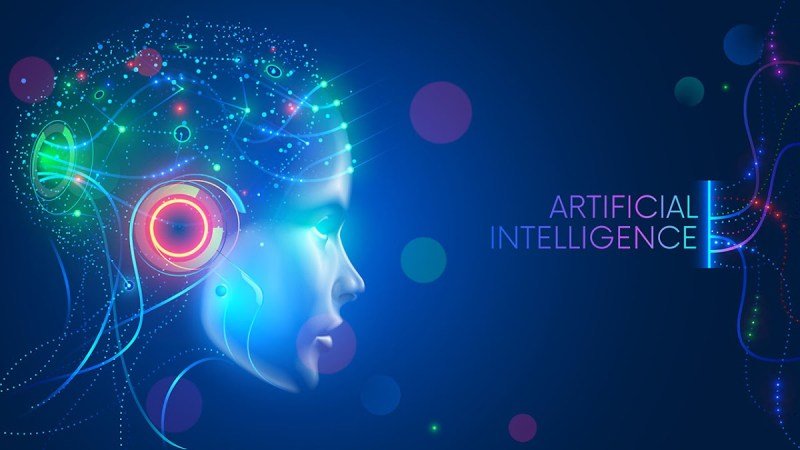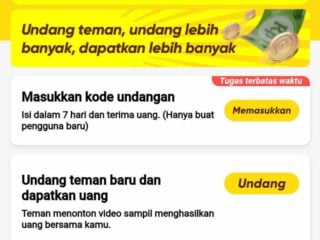Sejarah Ai Kecerdasan Buatan

Sejarah Ai Kecerdasan Buatan – History Artificial Intelligence (AI) In the early 20th century, the Spanish inventor Torres y Quevedo created a machine.
Presentation on theme: “History of Artificial Intelligence (AI) Invented in the early 20th century, a Spanish inventor, Torres y Quevedo, created a machine.” – Presentation transcript:
Sejarah Ai Kecerdasan Buatan
1 History Artificial intelligence or artificial intelligence (AI) was invented in the early 20th century when the Spanish inventor Torres y Quevedo created a machine that could control his opponent’s king against his queen and king. The next development is known as the invention of the computer.
Apa Itu Kecerdasan Buatan Bagaimana Ai Bekerja?
2 Expert Definition According to Solso et al (2008), Artificial Intelligence (AI) is a branch of computer science that deals with the development of computers (hardware) and computer programs (software). HAVE GOT. According to Simon (1987), artificial intelligence (AI) is a field of instruction concerned with the research, practice and programming of computers to do things that – from a human perspective – are intelligent. According to Richnight (1991), artificial intelligence (AI) is the study of how to make computers do things that humans can currently do better.
Artificial intelligence is stable. Natural intelligence can change rapidly. Artificial intelligence is easy to duplicate and deploy. Artificial intelligence is static. Artificial intelligence may be included. Artificial intelligence can work faster than natural intelligence. Artificial intelligence can outperform natural intelligence.
Humans have the ability to augment knowledge, while artificial intelligence requires systems that allow humans to use experience or direct learning to augment knowledge. Meanwhile, artificial intelligence must receive input in the form of symbolic input. Although artificial intelligence is very limited, human thinking can be used a lot.
Some computer programs work more efficiently than human thought, and most are a little weird but very good at simulating the real thing. Computers can solve problems such as detailed math problems faster and more accurately than humans. There are many other tasks that humans are good at, such as generalizing and learning new action patterns, and computers are still not good enough. Neuronal network system and PDP models and their relationships have lured scientists to explore the computerized principles that govern the nervous system in the human nervous system. Units represent neurons, but follow the behavior of neurons, which means that units can be connected to other units. The relationship between them can be strong, weak, or later stabilized (Churchland, 1989).
Solution: Per 13 Ai Kecerdasan Buatan
[6] A philosopher at the University of California, Berkeley, has described two types of AI, namely weak AI, which can be used as a tool for investigating human cognition, and strong AI, where a well-programmed computer understandable ‘think’. to have . . Let’s consider the pure mind versus season experiment proposed by the English mathematician Alam Turing.
The Turing Test Turing (1950) devised an experiment that involved conversations between humans asking questions of organisms that use language. The Turing Test is a veil that gives AI experts something concrete to work with and distracts them from philosophical musings. The main point of the Turing test for AI and linguists is that for computers to think like humans, computers must be able to understand and produce responses that effectively simulate core types of knowledge.
8 China Room To illustrate the scenario where strong AI becomes unacceptable, Sear offers the following. Suppose there is a person in a room surrounded by Chinese writing, this person knows nothing about the Chinese language and probably cannot tell the difference between Chinese calligraphy and other writings. From outside the room one gets another piece of Chinese writing with a set of rules for comparing the first set with the second set. The rules are written in plain English, which only allows one to associate one set of symbols with another set of symbols, and in the China Room one can give meaningful answers to questions about the written material. I don’t understand the language.
Perception and AI human vision are triggered by external signals of light, sound, molecular structure and pressure. Machines can imitate this perceptual mechanism by developing some of the sensory capabilities found in computers through recognition-oriented activity. Line analysis is a way to teach computers to recognize the geometric identity of complex objects, quickly recognize objects, make decisions and AI systems that act like a professional.
Mengenal Artificial Intelligence (ai) Dan Contohnya
10 Applications of AI Engineering Field–Smart parking system driven by computer processor Biomedical field—–ultrasound (light) equipment Ergonomics and agriculture—–Industrial liquid waste treatment—-Plastic flat chain conveyor communication–FX machine Transportation –> GPS for cars
11 Conclusion Artificial Intelligence (AI) is the study of how to enable computers to do things that humans can currently do better. But remember, in the end natural intelligence is less important than artificial intelligence because artificial intelligence starts with natural intelligence. Artificial intelligence is created and designed by natural intelligence, although artificial intelligence ultimately works faster than natural intelligence.
Download ppt “The history of artificial intelligence (AI) can be traced back to the beginning of the 20th century, when a Spanish inventor, Torres y Quevedo, created a machine.”
To operate this website, we log and share user data with processors. To use this website, you must accept our privacy policy, including our cookie policy. AI or artificial intelligence (Indonesian: artificial intelligence) is the ability of a machine or computer program to imitate the behavior or function of the human brain. This includes the ability of machine learning and algorithms to learn, adapt and solve problems like humans.
Bayang Kekhawatiran Di Derasnya Laju Inovasi Ai
AI is a technology that enables machines or computer programs to learn and solve problems like humans. For example, when we learn mathematics, machines or computer programs can learn from examples of data and recognize patterns in them so that they can solve mathematical problems.
For example, if we provide sample data in the form of pictures of cats and dogs and their respective labels, a machine or computer program can learn the difference between a cat and a dog. After a machine or computer program learns patterns in the sample data, the machine or computer program can accurately predict whether a given image is a cat or a dog.
With AI, machines or computer programs can automatically solve certain problems or tasks, such as predicting the weather, translating languages or playing games. AI can help people solve complex problems and speed up processes in many fields.
Many definitions of artificial intelligence (AI) have emerged in recent decades, with John McCarthy of Stanford University’s Department of Computer Science providing the following definition in this 2007 paper:
Perkembangan Ai Makin Pesat, Jenis Pekerjaan Ini Terancam
“AI is the science and technology of creating intelligent machines, especially intelligent computer programs. It performs tasks such as using computers to understand human intelligence, but AI need not limit itself to biologically observable mechanisms.”
However, decades before this definition, the conversation about artificial intelligence began with Alan Turing’s influential work “Computing Machinery and Intelligence” (PDF, 89.8 KB) (link is external IBM), published in 1950. In a paper published around this time, Turing, often called the “Father of Computer Science,” asked the following question: “Can machines think?”
From there, he proposed an experiment, now known as the “Turing Test,” in which a human researcher tries to distinguish between computer and human text responses. Although the experiment has been heavily criticized since its publication, it is still an important part of the history of AI and a current concept in philosophy because it uses ideas from linguistics.
Stuart Russell and Peter Norvig later published the book Artificial Intelligence: A Modern Approach (link is from IBM), which became one of the most important textbooks in the study of AI. In it, they explore four possible goals or definitions of AI that distinguish computer systems based on reasoning, thought, and action:
Apa Itu Kecerdasan Buatan? [pengertian, Sejarah, Cara Kerja Dan Perkembangan]
In its simplest form, artificial intelligence is a field that combines computer science and powerful data sets to enable problem solving. It also includes the subfields of machine learning and deep learning, often identified with artificial intelligence. This discipline includes AI algorithms that attempt to create expert systems that make predictions or classifications based on input data.
Weak artificial intelligence – also known as limited artificial intelligence or limited artificial intelligence (ANI) – is AI that is trained and focused on performing specific tasks. Weak artificial intelligence drives the AI that surrounds us today. ‘Limited’ might be a more accurate description of this type of AI, as it’s not weak at all; It empowered some very powerful applications like Apple’s Siri, Amazon’s Alexa, IBM’s Watson and autonomous cars.
Strong artificial intelligence includes General Artificial Intelligence (AGI) and Super Artificial Intelligence (ASI). Artificial general intelligence (AGI), or general AI, is a theoretical form of AI in which machines have a human-equivalent intelligence; He will have self-awareness able to solve problems, learn and plan for the future. Artificial intelligence (ASI) – also known as superintelligence – will surpass the intelligence and capabilities of the human brain. Strong artificial intelligence is still purely theoretical, with no practical examples in use today, which means that AI researchers are not exploring its development either. Meanwhile, the best examples of ASI may come from science fiction, such as HAL, the evil superhuman computer assistant in 2001: A Space Odyssey.
AI typically takes data from multiple sources, such as sensors, software or databases, to learn and detect patterns. This data is then analyzed









No Comments